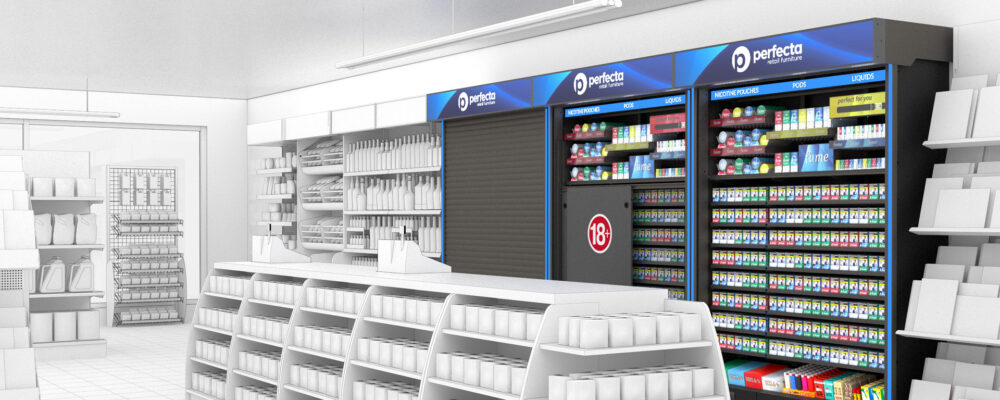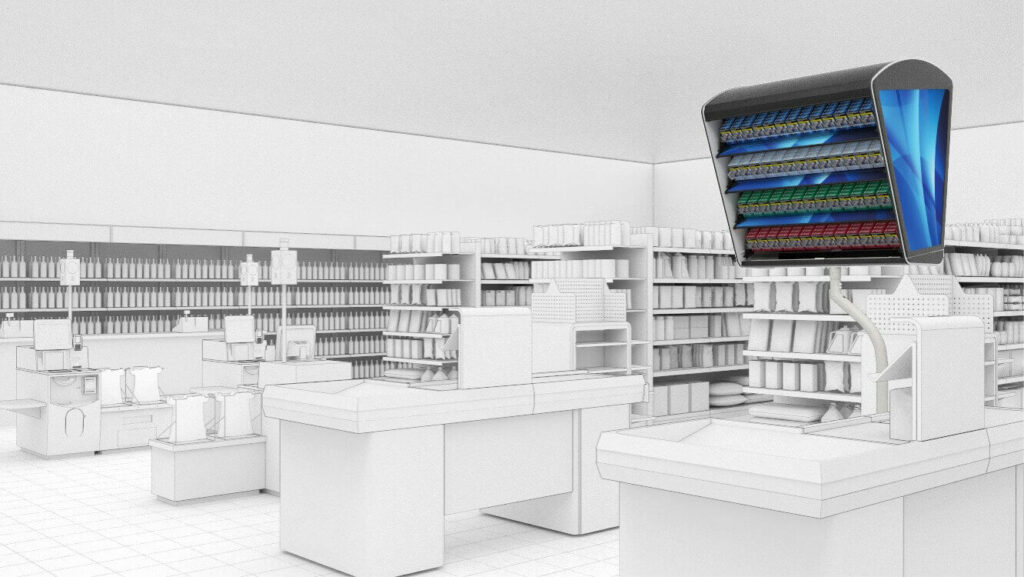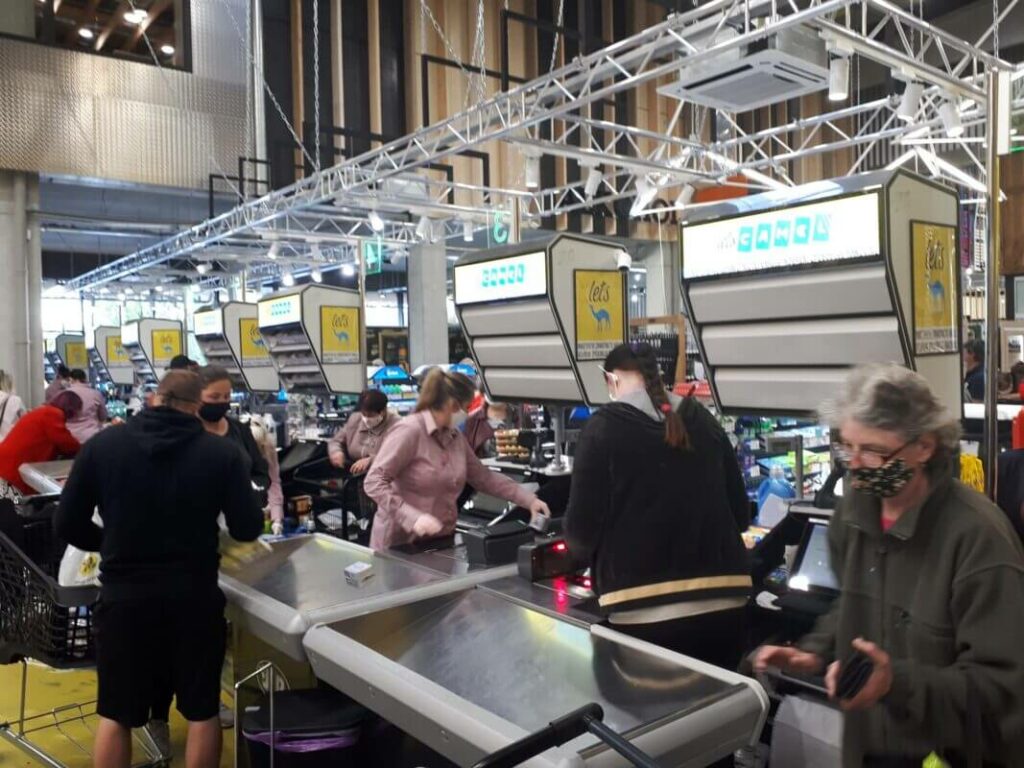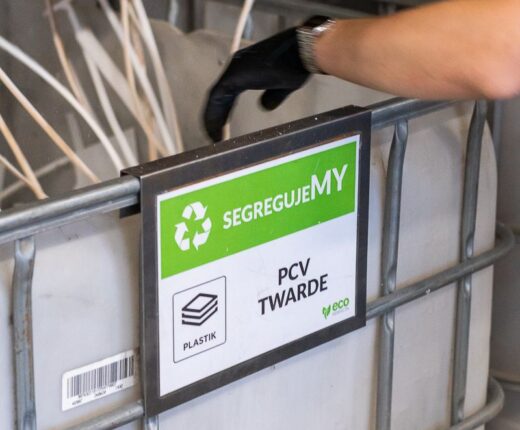Choosing the right tobacco merchandising fixtures for selling cigarettes and tobacco products in a store only seems to be a simple matter. In fact, it is not difficult to get lost in numerous legal, technological, and marketing conditions.
We talk to Tomasz Banaś, an expert on equipping retail outlets with fixtures for selling tobacco products at Perfecta, about how to efficiently navigate through this matter.
Let’s stage this scene: I am a manager in a medium-sized retail chain responsible for the purchase of furniture for the sale of tobacco products and I am looking for innovative solutions. I asked Perfecta for consultancy. Where are we going to start from?
Well. I would start by thanking you for choosing our company (laughs). After that, however, I will have to ask a few questions to be able to suggest suitable solutions for your business.
What kind of questions?
First of all, one should ask about the market in which the sale will take place. This question relates to tobacco exposure and marketing laws, which vary from country to country. In one place (e.g., in Germany or Poland) there will be practically no restrictions, in another (e.g., in Great Britain) there will be so-called Retail Display Ban (RDB), i.e. an order to cover tobacco products and show them only when the buyer explicitly asks for it.
In such a situation, does it make sense to sell this type of products at all?
Of course. Research shows that the average basket value of the customer buying tobacco or alcohol products is larger than the basket of the customer who does “normal” purchases. Therefore, despite various restrictions, sellers decide to sell tobacco despite the restrictive requirements that they have to meet.
All right. So, what questions do we need to prepare for?
The question about the legal conditions is already behind us, but it is also worth answering the question of whether we are in the transitional area or not, i.e. the moment when the legislator announced that the law will change in some time, forcing sellers to adapt to upcoming restrictions.
So, what are our options, depending on what law is in force at the moment?
There are three suggestions. When it comes to restricted markets, i.e. those where RDB prevails, we propose the use of systems with sliding doors that automatically cover the display of the tobacco products, or with flaps that show the packages only when opened. In the case of open markets, it is of course much easier. The third option is to use the so-called RDB-ready systems, i.e. those that allow them to be quickly adapted to the law changes, for example by installing doors. Such store fixtures are much cheaper and easier to adapt than furniture for open markets.
COMPACT
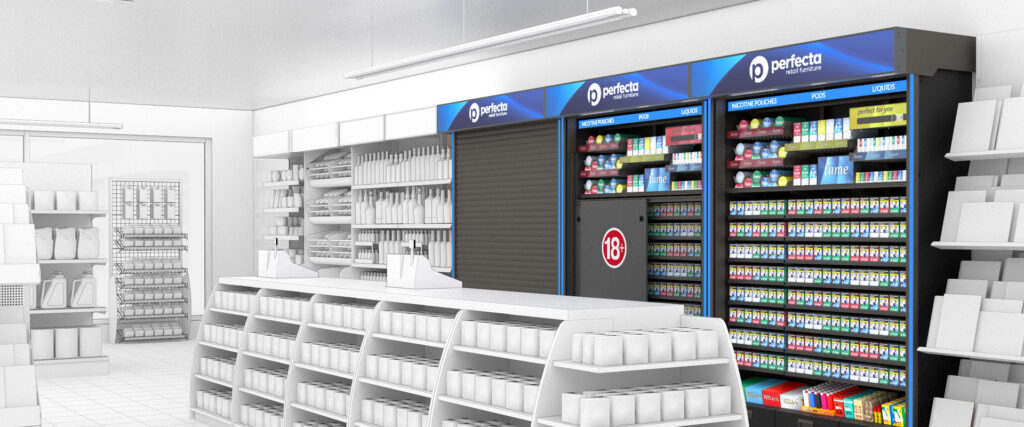
PERFECT.ONE

REVO
What else do we need to know tobacco merchandising fixtures?
Each piece of retail furniture should be adapted to the specifics of the particular point of sale. Please note that tobacco products cannot be picked up directly by buyers. It is a service task, and therefore store tobacco merchandising fixtures for the sale of this type of products must be located nearby.
Will each sales channel have the same furniture?
It would be too easy (laughs)! Each sales channel has its own specifics, which also forces a different retail furniture structure. For example, in the traditional channel, surplus or counter tobacco dispensers and tobacco displays are used. In the modern channel, we will also find over-the-counter tobacco dispensers, but there will also be floor cigarette dispensers and various types of store shelving. Finally, in the HoReCa channel, we will find small wall-mounted cigarette displays.
Phew, a lot of this …
And that’s not all! When choosing furniture for selling tobacco products, you should also remember about their capacity – after all, we do not want the tray to fit only a part of the portfolio. We must also choose the dimensions so that the piece of furniture effectively uses the space and display possibilities of the point of sale, without hindering the service or communication in the store.
The ergonomics of the tobacco merchandising fixtures is also important. Convenience and speed of service are very important to many chains, so consider such aids as baffle and pusher systems that bring products closer to the front of the shelf automatically. This improves the brand exposure, helps to keep order on the store shelves and makes it easier for the buyer to find the right product.
The shelf pull-out system is also useful, as it significantly speeds up stocking and carrying out inventories. You should also not forget about the pricing strip adapted to the standard of a given store.
See also: Augmented reality in merchandising
It looks like choosing the right store fixture for selling tobacco products is more complicated than it might seem at first!
And we haven’t even gotten to the area of In-Shelf Communication Management, so-called Category Management. Properly selected communication draws buyers’ attention to specific products, facilitating, for example, the sale of high-margin products, which leads to increased revenues. A new issue is the exhibition of innovative products, the so-called “Reduce Risk Products” or popularly known as e-cigarettes. In this category, there is often a lack of standardization in the size of the packaging, which in the case of inadequate furniture causes a mess on the shelf and a decrease in sales.
What would you say to a manager who wants to use a piece of retail furniture designed for a different product category to display tobacco products?
Of course, I will not forbid him to do so, but I will draw his attention to the fact that such “shortcuts” often lead astray. It happens that the gaps between the shelves are too large, so that the sales space is not used optimally. It also happens that a piece of furniture is constructed in such a way that it covers a part of the package, hiding from view either a health warning – which is illegal – or branding, which makes it difficult for staff to service. It all ends with one thing – loss of revenue.
So, what is your advice to those who are thinking of selling tobacco products?
My advice is simple. You should ask for help from professionals who will help you carefully analyze all legal, technological and marketing conditions and help you choose the piece of furniture that will best meet the assumptions and requirements.
Thank you for the interview.
Thank you.

